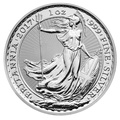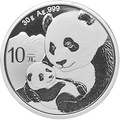Silver facts
With its greater abundance and lower value, silver can often get overlooked in comparison to gold. Silver has a huge number of uses across a wide range of industries however, and is fascinating in its own right. Many of the silver facts below are why silver is so useful, and therefore has an intrinsic value.
For investors purchasing silver coins and bars, here are some interesting facts about silver you might not have known...
Silver element facts
Below are 14 fun facts about the silver element:
- The name for silver comes from the old Anglo-Saxon word ‘seolfor’ .
- The words for ‘silver’ and ‘money’ are the same in several languages. For example, in French both words are argent . Silver has been used in the production of circulating currency for centuries, and has become synonymous with the idea of money.
- The chemical symbol for silver is Ag. This is derived from the Latin ‘argentum’ , which is itself based on the Sanskrit word ‘argunas’ which means 'shining'.
- Argentina is named for the silver presented to Spanish conquistadors when they arrived in the country. The Spanish word ‘argentino’ , likely derived from the Latin above, means 'silvery' .
- Silver is priced troy ounces like many other precious metals, with a spot price that changes every 2 minutes. It has been as low at 53p per ounce in the 1970s, and as high as £29.26 per ounce in 2011 following the financial crisis. View our live silver price charts.
- In Ancient Egypt, silver may have been valued higher than gold. Older examples of Egyptian language are missing any word for silver, and it is believed that supply of silver may have been much scarcer. Egyptian jewellery made of silver was often thinner - or smaller in scale - than their golden counterparts, and lists of valuables regularly placed silver above gold - suggesting a high value. By the Middle Kingdom, supplies seem to have improved. Sheshonq II was even entombed in a sarcophagus made of solid silver!
- Silver is mentioned 320 times in the King James Bible. Judas is believed to have been bribed with 30 pieces of silver to betray Jesus.
- Silver has often been associated with healing powers and warding against spirits. Horror fans will undoubtedly know of the legend that silver bullets are the key to defeating werewolves, and the curing of lycanthropy. Modern medicine has shown that this belief in silver's healing abilities were well placed. With anti-bacterial properties, silver is one of the most important materials in the fight against germs in our hospitals.
- In an impressively early show of knowledge for silver's antibacterial properties, Phoenicians as far back as 1200 BC stored water, wine and vinegar in silver bottles to keep it fresh.
- Silver is the best electrical conductor of all metals. It not only has a high conductivity, but defines the standard. Silver is classed as having a conductivity of 100 and all other metals are measured against it.
- Silver is the most reflective element. Polished silver will reflect 95% of visible light, which makes it perfect for mirrors and associated products like telescopes and cameras.
- Silver is stable in oxygen and water, but reacts with sulphur compounds in air that cause it to tarnish. This is often in the form of a dark-grey or black sulphide layer. Old mirrors often have black spots as a result of this, and many people avoid using silverware with eggs and egg-based foods, such as mayonnaise.
- Mercury was commonly called ‘quicksilver’, a reference to its silvery colour, and the unique way the liquid moves.
- Silver is the traditional gift for a 25th wedding anniversary.
- How To Buy Gold
- How to Buy?
- Payment Options
- Delivery Options
- Gold Storage
- Storage at Brink's
- Gold Investment Guide
- Why buy gold?
- Is gold a good investment?
- Why physical gold?
- Best time to buy gold?
- Gold bars vs coins?
- Gold vs Silver
- Gold - Silver Ratio explained
- VAT on bullion
- CGT on bullion
- Legal tender coins
- Top 5 Gold Investments
- Top 5 Silver Investments
- Gold vs ISAs
- Gold vs Buy-to-Let
- Gold vs FTSE 100
- Gold vs Bitcoin
- Where to buy gold?
- Why buy from us?
- Where to sell gold?
- Coin Shops
- Gold Price Forecasts
- Top 10 Gold Producers
- Top 10 Gold Reserves
- Gold Britannia vs Sovereign
- Britannia coin designs
- Sovereign coin designs
- Sovereign Mintages
- Sovereign mint marks
- British coin specs
- What is a proof coin?
- Royal Mint bullion
- The Queen's Beasts
- Royal Mint Lunar Coins
- Bullion Refiners
- British coin mints
- Krugerrands
- Gold Tola - India & Pakistan
- Bullion Index











